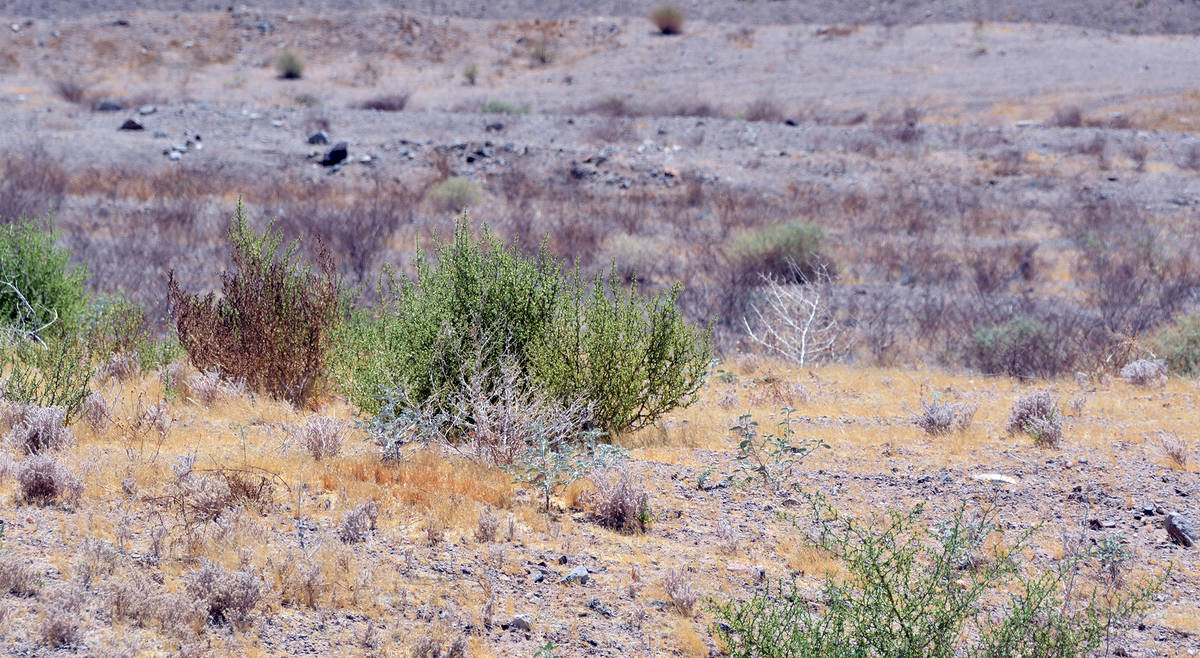Fatal disease for rabbits could change desert landscape
A fatal disease with the potential to change the makeup of the local desert landscape was recently found in Boulder City’s wild rabbit population.
Rabbit hemorrhagic disease does not affect humans but is fatal for wild and domestic rabbits. According to the Nevada Department of Wildlife, a dead wild cottontail rabbit found in town in June tested positive for the disease.
Animal Control Supervisor Ann Inabnitt said she and the shelter staff are aware and monitoring the situation.
“We are not seeing a bunch of dead rabbits yet,” she said.
Todd Esque of Boulder City, a researcher with the United States Geological Survey, found the dead rabbit and submitted it for testing through NDOW. He said RHDV2 can negatively affect desert conditions and wildlife.
“Rabbits and hares are very important components of our natural desert systems,” he said. “As primary consumers of vegetation, rabbits and hares influence desert vegetation by eating small succulent plants. They eat so much desert vegetation as a population that they can influence how much vegetation is on the landscape.”
Additionally, Esque said the wild rabbit and hare population affects desert predators.
“Besides influencing the desert plants, rabbits and hares are the primary food source for several important predators such as coyotes, kit foxes, gray foxes and golden eagles, among others. … If the virus were to kill a large proportion of the rabbits, there is concern that the predators will switch their prey choices and begin feeding on protected species such as the desert tortoise, or other protected species,” he said. “Alternatively, researchers speculate that predator numbers will decrease in response to lower prey availability.”
He said his research team has sent in additional samples from their work on rabbits and coyotes.
The disease is highly contagious for rabbits and can be spread through contact with infected rabbits, their meat or fur and materials having contact with those items. Additionally, insects and scavengers may spread RHDV2 via contact with infected material.
For prevention, Inabnitt said she and the staff are not allowing any equipment to be brought into the shelter from calls involving dead rabbits. The remains are also buried or cremated.
Rabbits infected with the disease may experience a loss of appetite, respiratory illness, blood around the nose or no symptoms at all before dying. Anyone who sees two or more cottontails or jack rabbits, or any pygmy rabbits and pikas, that are sick or dead, or has blood coming from their nose or mouth, is encouraged to call NDOW at 775-688-1500.
NDOW confirmed the disease was in Nevada’s wild rabbit population. Cases have also been confirmed in Arizona, California, Utah, Colorado, New Mexico and Texas.
Contact reporter Celia Shortt Goodyear at cgoodyear@bouldercityreview.com or at 702-586-9401. Follow her on Twitter @csgoodyear.
To prevent the spread of rabbit hemorrhagic disease virus 2:
▶ Never use any clothing, shoes or equipment that have been used in other environments when working around pet rabbits.
▶ Change clothing and shower after handling wild rabbits and before coming in contact with a pet rabbit.
▶ Prevent pet rabbits from coming in contact with wild rabbits or domestic rabbits from outside of the rabbitry.
▶ Sanitize all equipment and cages moved on or off premises before they are returned to the rabbitry.
▶ Use separate equipment for newly acquired or sick rabbits to avoid spreading disease.
▶ Do not allow visitors in rabbitries or let them handle pet rabbits without protective clothing (including coveralls, shoe covers, hair covering and gloves).
— Nevada Department of Wildlife















